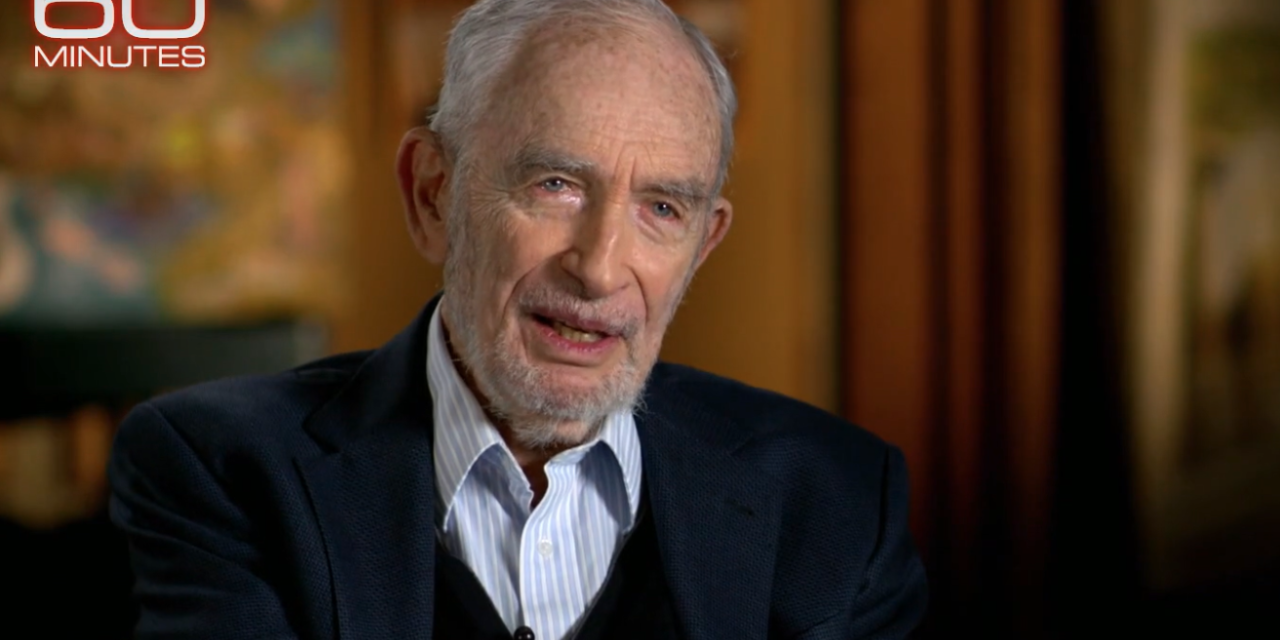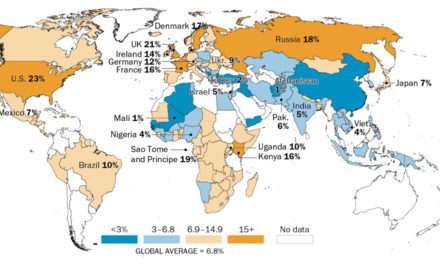Would you continue to take advice from someone whom reality has proven famously wrong time and again about the most consequential predictions he has ever made? Well, the television news program 60 Minutes did exactly that this week, on New Year’s Day. Not a great start for an outfit whose reputation rests on accuracy.
But they are getting properly raked for it, here, here, here, here, here, and here.
60 Minutes did this by featuring a world-class, fear-mongering interview with Paul Ehrlich, the man who wrote the best-selling book Population Bomb in 1968. He was just as wrong on Sunday as he was when that book came out, telling 60 Minutes, “Oh, humanity is not sustainable. To maintain our lifestyle (yours and mine, basically) for the entire planet, you’d need five more Earths. Not clear where they’re gonna come from.”
Why do people keep falling for this man’s outrageous and baseless claims?
Johnny Carson had the Stanford biologist on his show numerous times over the decades, making Ehrlich one of the most famous men in America. Carson even devoted an entire show to his environmentalist end-of-the-world predictions. But nearly every major gloom-and-doom prediction this celebrated scientist made in that book was wrong … and woefully so.
On the very first page, Ehrlich predicted with absolute certainty,
The battle to feed all of humanity is over. In the 1970s, the world will undergo famines – hundreds of millions of people are going to starve to death in spite of any crash programs embarked on now. At this late date, nothing can prevent a substantial increase in the world death rate…
Obviously, this did not happen. In fact, Ehrlich got it exactly wrong. Actually, the global crude death rate has been declining like a ski slope since the time of this prediction.
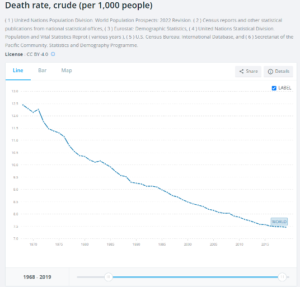
While on a speaking tour in England in 1969, he famously told a crowded meeting at the prestigious Institute of Biology,
If current trends continue, by the year 2000 the United Kingdom will simply be a small group of impoverished islands, inhabited by some 70 million hungry people, of little or no concern to the other 5-7 billion inhabitants of a sick world.
He added this equally dramatic prediction, “If I were a gambler, I would take even money that England will not exist in the year 2000.”
Well, of course that small group of islands is very much still there and doing just fine. And doubter can see here via webcam. And the rest of the world is still quite taken with them, evidenced by no shortage of Royal mania.
Ehrlich also said at the time, “I don’t see how India could possibly feed two hundred million more people by 1980.” A few pages later, “I have yet to meet anyone familiar with the situation who thinks that India will be self-sufficient in food by 1971.”
Well Ehrlich, and all those experts he met, turned out to be precisely wrong again.
Food production and consumption in India, as well as the rest of the world, has been improving decade after decade, as demonstrated in this chart from the Oxford Martin Programme on Global Development at the University of Oxford.
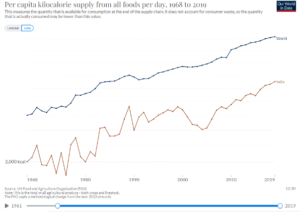
Ehrlich also stated in the prologue of Population Bomb,
“We are today involved in the events leading to famine; tomorrow we may be destroyed by its consequences … The birth rate must be brought into balance with the death rate or mankind will breed itself into oblivion.”
As the Daily Citizen demonstrated recently when the global population hit 8 billion people, apocalyptic statements like this have no basis in reality. Just consider these facts:
- Even at 8 billion people, the world is nowhere close to overpopulated. Eight billion people can easily fit in the state of Wyoming, with space to move around. That leaves the whole rest of the earth untouched.
- In fact, underpopulation is what has governments and leading demographers deeply concerned.
Research funded by the Gates Foundation and published in the Lancet in 2020 finds the projected fertility rates in 183 of 195 countries and territories will not be high enough to maintain current populations by the century’s end. This is called negative population growth and once it starts, it probably won’t stop.
The Gates team of researchers put current reality in stark relief:
- The number of global citizens under five years of age will fall from 681 million in 2017 to 401 million in 2100, a 41 percent drop.
- The number of over 80-year-olds will soar from 141 million in 2017 to 866 million in 2100, a whopping 514 percent increase.
Imagine you own a business, and these are your future customer projections. Your investors would rightfully be freaking. And so it is with the global population.
These Gates-funded demographers put the significant population decline we are seeing in recent historical perspective:
- There were 25 worldwide births for every person turning 80 in 1950, a healthy demographic dividend.
- In 2017, that ratio shrank to 7:1. Not so healthy.
- These scholars explain, “in 2100 we forecasted one birth for every person turning 80 years old.” Absolutely dire.
We screenshot it here so you can see it for yourself.
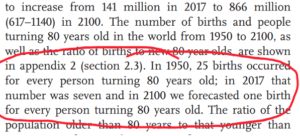
(See the the original on page 1297.)
Folks, this is precisely what the death of humanity looks like. And it is coming precisely from too few people being born, rather than too many. Yes, Professor Ehrlich got it exactly wrong again.
But he is certainly not alone in his fault. Far too many believe this myth today.
Professor Christopher Murray, director of the Institute for Health Metrics and Evaluation at the University of Washington’s School of Medicine and head of the Gates study, told the BBC, “I find people laugh it off… they can’t imagine it could be true, they think women will just decide to have more kids.” But he warns, “If you can’t [find a solution] then eventually the species disappears.”
As Ronald Bailey explained over at Reason magazine, “CBS and 60 Minutes should be ashamed of promoting Ehrlich’s oft-debunked nonsense.” Baily is exactly correct.
And especially when the clear and demonstrable science is the exact opposite of what people like Ehrlich and others in the mainstream media are spouting.

